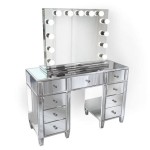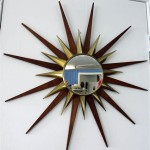How to Mirror a Mac Display
Mirroring a Mac display allows users to duplicate their Mac's screen onto a larger display, such as a television or projector. This feature proves invaluable for presentations, watching movies, or simply extending the workspace. This article outlines various methods to accomplish screen mirroring with a Mac, catering to different setups and devices.
Using AirPlay to a Compatible Smart TV or Apple TV
AirPlay is Apple's proprietary wireless streaming technology. It facilitates seamless screen mirroring to compatible devices like Apple TVs and certain smart TVs. The advantage of AirPlay lies in its straightforward setup and wireless convenience. To mirror using AirPlay, ensure the Mac and the receiving device are on the same Wi-Fi network.
Locate the AirPlay icon in the Mac's menu bar. This icon resembles a rectangle with an upward-pointing triangle at the bottom. Clicking this icon will display a list of available AirPlay devices. Select the desired device to initiate mirroring. If the AirPlay icon is not visible, open System Preferences, navigate to Displays, and check the box next to "Show mirroring options in the menu bar when available."
Once connected, the Mac's display will be mirrored on the selected device. Users can adjust the resolution and other settings within the Displays section of System Preferences. To stop mirroring, click the AirPlay icon again and select "Turn AirPlay Off." Some Smart TVs have built-in AirPlay support; consult the TV's documentation for instructions on enabling and using AirPlay.
Connecting to a Display Using a Cable
Direct connection through a cable offers a stable and reliable mirroring solution, particularly suitable for environments where Wi-Fi is unreliable or unavailable. The type of cable required depends on the Mac model and the display's ports. Common cable types include HDMI, Thunderbolt, DisplayPort, and VGA (with an adapter). Refer to the specifications of both the Mac and the display to determine the appropriate cable.
Once the correct cable is connected to both devices, the Mac should automatically detect the external display. If not, open System Preferences and go to Displays. Click the "Detect Displays" button if necessary. The "Arrangement" tab allows users to customize the display arrangement. Select "Mirror Displays" to duplicate the Mac's screen on the external display. The "Resolution" tab enables adjusting the resolution of the external display for optimal viewing.
Utilizing Third-Party Adapters and Devices
In scenarios where direct AirPlay or cable connections are not feasible, third-party adapters and devices offer alternative mirroring solutions. These can be especially helpful with older displays or those lacking specific ports.
Several manufacturers produce adapters that convert various signals to HDMI or other common display inputs. These adapters can bridge the compatibility gap between a Mac and a display. Additionally, some third-party wireless display adapters utilize technologies similar to AirPlay, enabling wireless mirroring to non-AirPlay compatible devices. Researching and choosing a reputable adapter suited to the specific needs of the setup is essential. Always ensure compatibility with the Mac's operating system and the display's inputs.
Troubleshooting Mirroring Issues
Occasionally, users may encounter issues with screen mirroring. A common problem is the absence of the AirPlay icon. As previously mentioned, ensure both devices are on the same network and that AirPlay is enabled in System Preferences. Restarting both devices can sometimes resolve connectivity problems. If using a wired connection, verify that the cable is securely plugged into both devices and is undamaged.
For resolution issues, check the display settings on both the Mac and the external display. Ensure the chosen resolution is supported by both devices. If using a third-party adapter, consult the manufacturer's documentation for troubleshooting steps specific to that device. In some instances, updating the Mac's operating system or drivers may be necessary to ensure compatibility with the display or adapter.
Optimizing Mirrored Display Performance
For the best mirroring experience, consider the capabilities of both the Mac and the external display. High-resolution content might strain older Macs, potentially causing lag or performance issues. Adjusting the resolution to a lower setting can improve performance. Closing unnecessary applications on the Mac also frees up system resources, contributing to smoother mirroring.
When using wireless mirroring, minimize interference from other devices on the Wi-Fi network. Proximity to the router also plays a significant role in connection stability and performance. For demanding applications like video editing or gaming, a wired connection generally provides the best performance and minimizes latency.

How To Mirror Specific Displays In Os X Some But Not All Of Your Monitors On An Apple System Macfinder Blog

How To Mirror Specific Displays In Os X Some But Not All Of Your Monitors On An Apple System Macfinder Blog

Mirror Displays On The Mac With A Keyboard Shortcut Osxdaily

How To Mirror Your Mac Laptop A Pc Monitor

How To Use External Monitors With Mac Laptops And Desktops

How To Mirror A Mac Tv Osxdaily

How To Use Apple Airplay Mirror Your Iphone Mac Screen On Tv Roku And More Cnet

How To Mirror Mac Screen Pc
Imac Won T Offer Display Mirroring Option Apple Community

How To Mirror Your Mac Laptop A Pc Monitor








